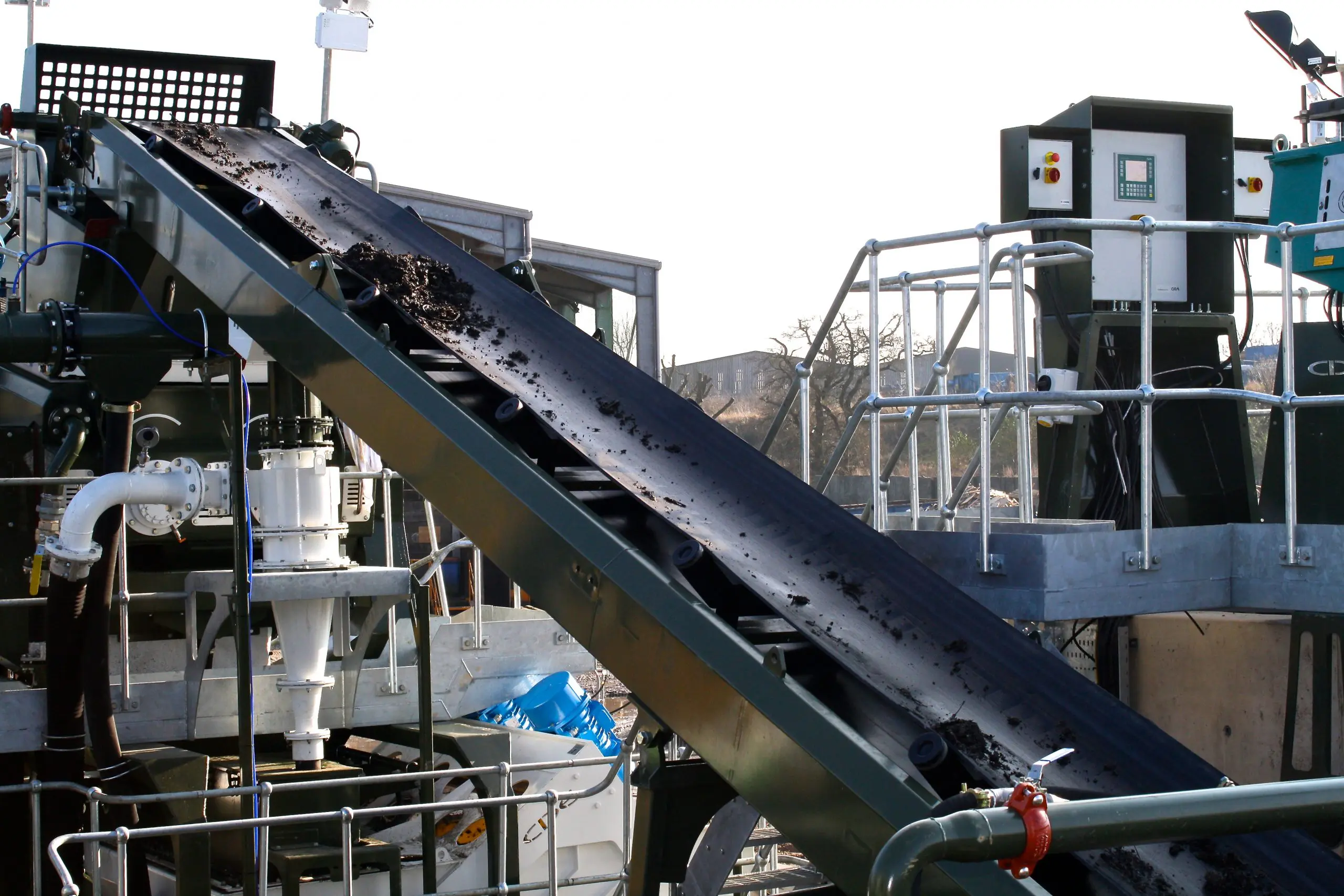With many local authorities battling to maintain recycling rates, our road sweeper waste recycling facility is designed to help provide a timely solution.

Costing £1.3 million, the facility has been purpose-built to for the treatment and recovery of road sweeper waste.
Based at our Ewelme operation in Oxfordshire, it is capable of processing around 25,000 tonnes of road sweepings a year – roughly 10 tonnes every hour.
We invested in the facility after the Environment Agency regulated against the composting of street leaf sweepings, after test showed high levels of contaminants which could pose a danger to human health.
The Environment Agency’s ban on the composting of road sweeping material has affected recycling rates for many local authorities, but the road sweeper waste recycling facility provides a suitable and sustainable solution for this material.
Not only does our facility offer a viable alternative to the banned composting of material, it is one that enables 100% recovery of all road sweeping waste.
All material is reprocessed, ensuring that we can boost the green credentials of our local authority customers, and also those private contractors who operate similar road sweeping equipment.
Following on from the Environment Agency’s ban on the composting of road sweeping material, the recycling rates of many local authorities and councils have been affected.
Our road sweeper waste recycling facility offers the perfect solution and can help our local authority customers to increase their recycling performance. The facility enables 100% recycling and recovery of all materials, diverting waste from landfill.
Other customers who could benefit by using the facility included private contractors who operate road sweepers or collect road sweeping waste.
Our road sweeper waste recycling facility can recycle a range of aggregate products thanks to its sophisticated recovery process. The recycled aggregate products that it recovers range from sand to larger grit and gravel products screened at 5mm through to larger aggregates at 40mm and larger.
All of these products are available through our sister company Grundon Sand & Gravel Limited, and all qualify for “end of waste” status.
The full range of recycled aggregates provide a cheaper and greener alternative to newly extracted virgin aggregates. For more information on our range of recycled products please contact our colleagues at Grundon Sand & Gravel on 01189 711 687 or email aggregatesales@grundon.com
When the road sweeper waste arrives at the facility, it goes into a tipping area capable of holding around 300 tonnes, where dewatering takes pace. This sees excess water drained out and syphoned into a giant storage tank for treatment and reuse later in the process.
From there, the waste passes under a giant magnet to ensure any metals, such as bottle tops or nails are removed, before going through a log washer where giant teeth scrub and wash the material.
While smaller particles remain in the water, larger aggregate materials (from 5mm to 40mm or larger) are removed at the ‘triple screen’ stage, when they are sorted and stored by size in bunkers.
Remaining material continues into the Hydrocyclone, effectively going through a giant wash and spin cycle, which separates out organic material (such as leaves) and litter, from sand and grit which is less than 5mm in size, with both being stored in further bunkers.
The last of the waste water goes into a water treatment facility where a polymer is added, which allows the separation of clean water from the coagulant solids.
This sludge then goes into a centrifuge to remove as much further water as possible before forming a filter cake, which can be used in land restoration projects.
With all the materials now in their respective storage units, the final stage can begin.
Litter is removed from organic material and sent to an Energy from Waste facility, where it is used a fuel source and incinerated to create green electricity. The organic material itself is composted ready for use in land restoration projects.
Thanks to the sophisticated recovery process, both the sand and the larger size aggregates qualify for “end of waste” status. This allows the materials to be sold to the building trade and sand and gravel businesses, where demand for recycled products continues to increase, as these are a cheaper alternative than virgin aggregates.
